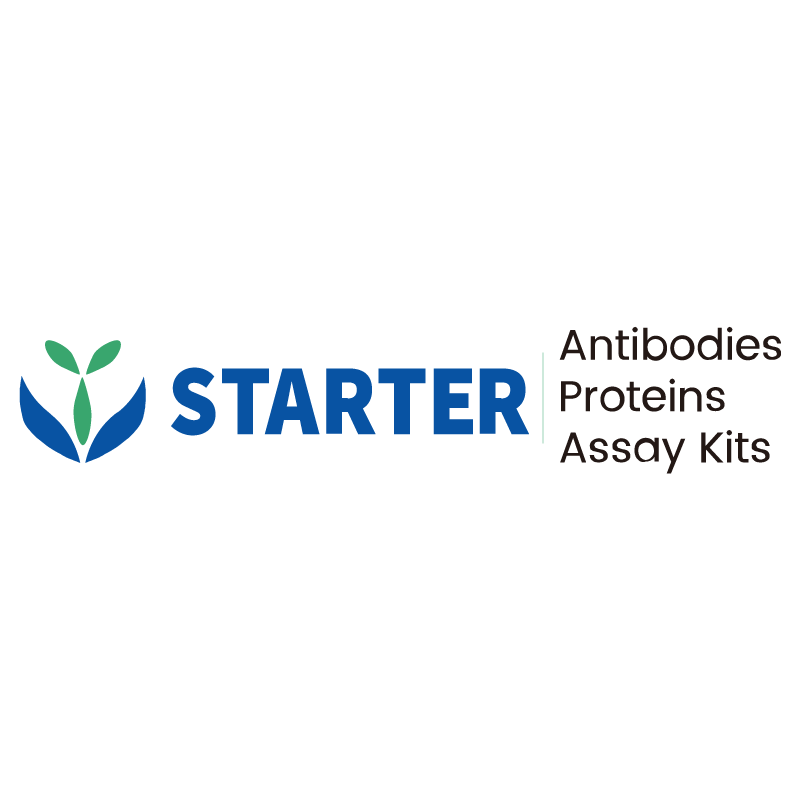WB result of LIN28A Rabbit pAb
Primary antibody: LIN28A Rabbit pAb at 1/1000 dilution
Lane 1: HeLa whole cell lysate 20 µg
Lane 2: 293T whole cell lysate 20 µg
Lane 3: T-47D whole cell lysate 20 µg
Lane 4: NCCIT whole cell lysate 20 µg
Lane 5: JAR whole cell lysate 20 µg
Lane 6: NTERA-2 whole cell lysate 20 µg
Negative control: HeLa whole cell lysate; 293T whole cell lysate
Secondary antibody: Goat Anti-rabbit IgG, (H+L), HRP conjugated at 1/10000 dilution
Predicted MW: 23 kDa
Observed MW: 24 kDa
Product Details
Product Details
Product Specification
| Host | Rabbit |
| Antigen | LIN28A |
| Synonyms | Protein lin-28 homolog A; Lin-28A; Zinc finger CCHC domain-containing protein 1; CSDD1; LIN28; ZCCHC1 |
| Immunogen | Recombinant Protein |
| Location | Cytoplasm, Nucleus, Endoplasmic reticulum |
| Accession | Q9H9Z2 |
| Antibody Type | Polyclonal antibody |
| Isotype | IgG |
| Application | WB |
| Reactivity | Hu, Ms |
| Positive Sample | T-47D, NCCIT, JAR, NTERA-2, F9 |
| Purification | Immunogen Affinity |
| Concentration | 0.5 mg/ml |
| Conjugation | Unconjugated |
| Physical Appearance | Liquid |
| Storage Buffer | PBS, 40% Glycerol, 0.05% BSA, 0.03% Proclin 300 |
| Stability & Storage | 12 months from date of receipt / reconstitution, -20 °C as supplied |
Dilution
| application | dilution | species |
| WB | 1:1000-1:5000 | Hu, Ms |
| IHC-P | 1:500-1:1000 | Hu, Ms |
Background
LIN28A is an evolutionarily-conserved RNA-binding protein that harbors a cold-shock domain and two CCHC-type zinc knuckles, enabling it to dock onto specific motifs (e.g., UGAU loops) in mRNAs and micro-RNA precursors; by blocking the biogenesis of the tumor-suppressive let-7 family and by directly stabilizing or enhancing translation of metabolic, hypoxic and pluripotency transcripts (including HIF1α, IGF2BP3 and OCT4 targets), LIN28A sustains pluripotency, drives aerobic glycolysis, fosters embryonic and adult tissue regeneration, and when re-activated in cancers promotes stemness, angiogenesis, epithelial-to-mesenchymal transition, chemoresistance and poor patient prognosis.
Picture
Picture
Western Blot
WB result of LIN28A Rabbit pAb
Primary antibody: LIN28A Rabbit pAb at 1/1000 dilution
Lane 1: NIH/3T3 whole cell lysate 20 µg
Lane 2: F9 whole cell lysate 20 µg
Negative control: NIH/3T3 whole cell lysate
Secondary antibody: Goat Anti-rabbit IgG, (H+L), HRP conjugated at 1/10000 dilution
Predicted MW: 23 kDa
Observed MW: 24 kDa
Immunohistochemistry
Negative control: IHC shows negative staining in paraffin-embedded human kidney. Anti-LIN28A antibody was used at 1/1000 dilution, followed by a HRP Polymer for Mouse & Rabbit IgG (ready to use). Counterstained with hematoxylin. Heat mediated antigen retrieval with Tris/EDTA buffer pH9.0 was performed before commencing with IHC staining protocol.
IHC shows positive staining in paraffin-embedded human seminoma. Anti-LIN28A antibody was used at 1/500 dilution, followed by a HRP Polymer for Mouse & Rabbit IgG (ready to use). Counterstained with hematoxylin. Heat mediated antigen retrieval with Tris/EDTA buffer pH9.0 was performed before commencing with IHC staining protocol.
Negative control: IHC shows negative staining in paraffin-embedded human prostatic cancer. Anti-LIN28A antibody was used at 1/1000 dilution, followed by a HRP Polymer for Mouse & Rabbit IgG (ready to use). Counterstained with hematoxylin. Heat mediated antigen retrieval with Tris/EDTA buffer pH9.0 was performed before commencing with IHC staining protocol.
IHC shows positive staining in paraffin-embedded mouse testis. Anti-LIN28A antibody was used at 1/500 dilution, followed by a HRP Polymer for Mouse & Rabbit IgG (ready to use). Counterstained with hematoxylin. Heat mediated antigen retrieval with Tris/EDTA buffer pH9.0 was performed before commencing with IHC staining protocol.
Negative control: IHC shows negative staining in paraffin-embedded mouse liver. Anti-LIN28A antibody was used at 1/1000 dilution, followed by a HRP Polymer for Mouse & Rabbit IgG (ready to use). Counterstained with hematoxylin. Heat mediated antigen retrieval with Tris/EDTA buffer pH9.0 was performed before commencing with IHC staining protocol.


